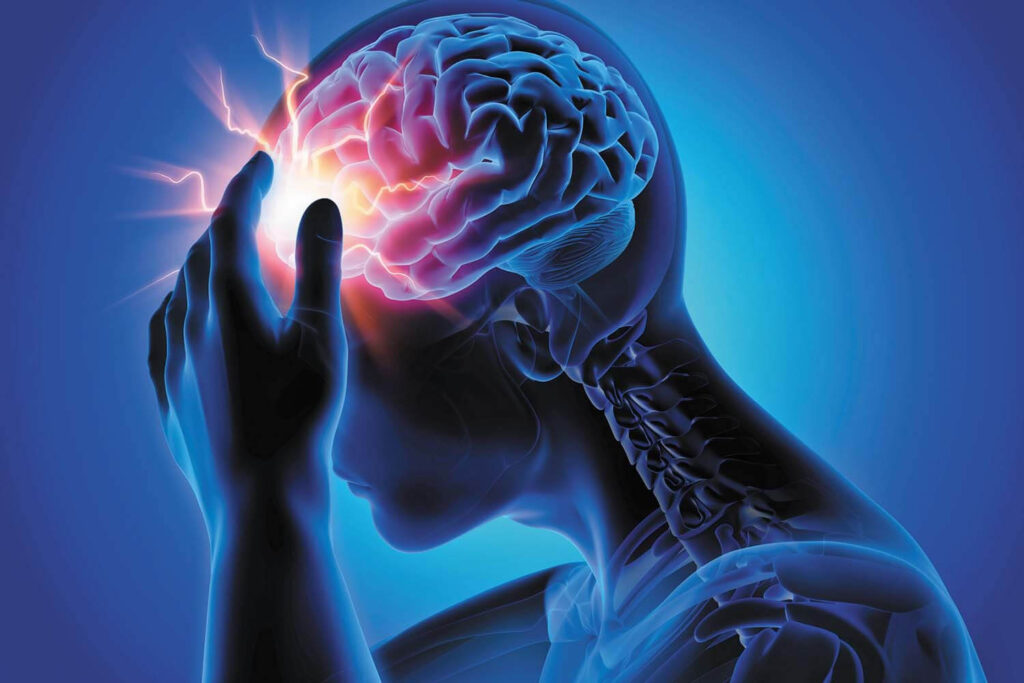Headaches: Physical Therapy Helps!

Headaches are a common complaint in everyday life. According to the WHO, 50-75% of people aged 18-65 globally have reported a headache within the past year. 1.7-4% of these headaches last 15 days or longer1. Headaches, though oftentimes mild, can impact job performance, affect social relationships, and reduce the overall quality of life.
The International Headache Society classifies headaches into different categories2:
- Tension – type (most common benign headache3)
- Migraine
- Cluster
- Secondary headaches due to underlying causes
- Fever
- Infectious disease
- Sinus disorder
- Tumor or more serious illness
- Cranial Neuralgias
- Facial pain
- Other
While it is important to discuss your headache symptoms with your primary care doctor to rule out more serious issues, physical therapy can be an effective intervention when dealing with specific types of headaches.
Tension-type headaches and cervicogenic headaches have shown to respond well to physical therapy interventions.
Tension-Type Headaches
Tension-type headaches are the most common type of benign headache with roughly 38% of the population experiencing them in a given year. These typically start in the teenage years but people in their thirties are at the highest risk of having tension type headaches. Tension-type headaches can be either episodic or chronic where the former occurs less than 15 days out of a month and the latter persists for 15 or more days within a month for three consecutive months3.
Tension-type headaches usually start at the base of the head and can travel to the top of the head and the eyes2 Tension-type headaches are also described as feeling like a tight band or pressure from the neck around the head. In more chronic cases, comorbidities such as nausea, anxiety, and depression may also be present3.
There are several causes that can contribute to the development of tension-type headaches3. These can included, but are not limited to:
- Stress
- Abnormal posture for prolonged periods
- Awkward sleeping position in a cold room
- Eye strain
- Post head and neck injury
- Clenched jaw or teeth grinding
- Arthritis
Looking at the list of causes, we can see why physical therapy can be beneficial to the treatment of tension-type headaches.
Cervicogenic Headaches
What does cervicogenic mean? Cervicogenic headaches are specifically related to dysfunction of the upper cervical, or neck, joints. They differ from tension-type headaches as neck movement can trigger the headaches, where this mechanism is not typical in the tension-type headaches4. However, these headaches are less common than the tension-type headache.
Typically, cervicogenic headaches present as one side dominant headache that is triggered by neck movement or posture. Common findings include tenderness to the 3 uppermost cervical joints and is associated with cervical dysfunction and mobility loss, which is not consistently present with tension-type headaches4.
What seems to be the cause of cervicogenic headaches? These headaches are “thought to be referred pain arising from irritation caused by structures innervated by spinal nerves C1, C2, and C3”4. This means that joints, discs, ligaments, and musculature innervated by these nerves can contribute, or be the source, of the cervicogenic headache. Reduced joint mobility, decreased cervical muscle strength/endurance, and abnormal posture can contribute to the irritation of these structures.
How does physical therapy help with tension – type and cervicogenic headaches?
While these two types of headaches present slightly differently in the clinic, they have several things in common. Physical structures like joints, muscles, ligaments and external factors including posture, stress, strength, and sleep positions are implicated in these types of headaches. Physical therapy can identify and treat these impairments resulting in a decrease in the occurrence of these headaches.
Following a detailed review of your history and a physical examination, physical therapists can quickly apply the appropriate interventions to reduce your headaches.
Soft tissue mobilizations, joint mobilizations, and traction are a few examples of the manual therapies that are effective in treating both tension-type and cervicogenic headaches. Specific strengthening exercises to your back and neck muscles are used to address weaknesses identified during the initial evaluation3,4.
Education that includes postural awareness and sleep positions are utilized to ensure that the impacts made during treatments are carried over into your daily activities. As stress can be a key contributor to these headaches, education focusing on mindfulness, breathing, and reducing these life stresses plays a pivotal role in managing your headaches3,4.
While we typically think of using medication to treat headaches, physical therapy is an important tool in the treatment and management of tension-type and cervicogenic headaches. Mobility, strength, postural awareness, and mindfulness can be utilized to not only eliminate headaches, but empower you to maintain a headache free life.
Please contact The FIT Institute to talk to one of our Physical Therapists to discuss possible treatments for your headaches.
Written by Thomas Dyke: Physical Therapist and Orthopedic Clinical Specialist on May 18, 2020.
References:
1 “Headache disorders – World Health Organization.” 8 Apr. 2016, https://www.who.int/news-room/fact-sheets/detail/headache-disorders. Accessed 14 May. 2020.
2 “Physical Therapy Guide to Headaches – ChoosePT.com.” https://www.choosept.com/symptomsconditionsdetail/physical-therapy-guide-to-headaches. Accessed 14 May. 2020.
3 “Tension Headaches – Physiopedia.” https://www.physio-pedia.com/Tension_Headaches. Accessed 14 May. 2020.
4 “Cervicogenic Headache – Physiopedia.” https://www.physio-pedia.com/Cervicogenic_Headache. Accessed 14 May. 2020.
